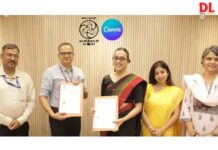
Unless online education is blended with experiential and activity-based learning, it will tend to become a screen-based education with limited focus on the social, affective and psychomotor dimensions of learning. (Pp. 59 National Education Policy 2020)
According to the National Education Policy 2020, published by India’s government, blended learning should be experiential and activity based. It is not a mere mix of online and face-to-face modes, but refers to a well-planned combination of meaningful activities in both.
After looking into several different successful blended learning programs, there are a few qualities that stand out:
• Intentional technology use. Emerging technologies, and those that are untested at scale, can be very attractive and engaging in the right circumstances, but they are also prone to steep learning curves, a lack of support, and financial investment. Technology that is familiar and well-integrated into daily life can be used to generate extremely innovative practice. Above all, effective blended programs are focused on the learning experience and outcomes before considering the purpose of technology’s role in learning.
• Student engagement. Most students nowadays are surrounded by technology in their everyday life. They often engage more easily with material when technology is incorporated in instructional settings. Enriching blended learning content with appropriate images, audio and video can add variety and impact. Some platforms allow incredible engagement opportunities, and, with the right planning, the learning with these platforms and tools can be very effective. Additionally, students become empowered as they expand their technological skills and competency with technology.
• Active blended learning. The University of Northampton in the United Kingdom is in a strong position to respond to the challenges of the COVID-19 pandemic. The active blended learning pedagogical approach used by the institution combines sense-making activities with focused student interactions (with content, peers and tutors) in appropriate learning settings – in and outside the classroom. Students discuss ideas, experiment, work in teams and receive tutor feedback. Whether on campus or remotely, community, cooperation, flexibility, and accessibility are highly valued.
• Appropriate training for instructors. It cannot be assumed that a good teacher in a traditional classroom will automatically be a good teacher in an online classroom. Aside from changes required in pedagogy, online assessments also require a different approach. There are numerous challenges to conducting online examinations at scale, including limitations on the types of questions that can be asked in an online environment; handling network and power disruptions; and preventing unethical practices. Numerous bite-sized training resources can be found online to meet “just in time” needs. There are also professional training programs like the Digital Teaching and Learning series by Blackboard. This series is a professional development pathway for education practitioners and support staff in the use of digital learning technologies to promote excellence, high quality, and consistency in the student experience.
To read more, click on the link : https://blog.blackboard.com/blended-learning-should-be-experiential-and-activity-based/”






















